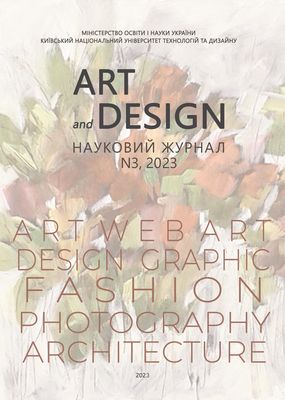FLORAL COMPOSITION IN CHINESE FINE ART OF THE QING ERA (1644–1912)
DOI:
https://doi.org/10.30857/2617-0272.2023.3.16Keywords:
art of the Qing era, floral composition, still life, “flowers and birds” genre, “flowers in a vase” genre, “flowers in a pot” genre, Penjing, flower semantics, Chinese ceramicsAbstract
The purpose of the article is to highlight the historical and cultural background in the formation of floral compositions, their place in the genre system of Chinese fine art of the Qing era and to determine their compositional models and artistic features. A wide range of artworks from the leading museums of the People's Republic of China and Ukraine are considered. Art branches that have become the main ones for the development of floral compositions and their further adaptation in other types and genres of art are singled out. Leading masters are identified. The origins and development of the floral composition from the time of the Tang Dynasty (618–907) to the Qing Dynasty (1644–1912), its growth and main types that developed during the reign of Emperor Qianlong (1736–1795) are shown. The identified representative samples are considered in the broad context of religious traditions, the politics of the Manchu dynasty, the culture of offerings and the program of collecting rarities. The separation of floral still life into a special genre was established with the development of horticulture and the tendency to interiorize the landscape. It is emphasized that a still life with flowers always carries a benevolent meaning regardless of the composition type, the degree of authenticity in the transfer of pictorial objects and the time of creation. The features of the formation of a floral composition as a result of the landscape interiorization, its two-dimensional and three-dimensional varieties from a scroll to a screen and Penjing art and decorative compositions are determined. The practical significance of the results of the study lies in the possibility of their use in the development of design and artistic solutions, the conceptual basis for the development of relevant training courses, museum exhibitions, and the formation of a general picture of the evolution of pictorial genres in classical China.

